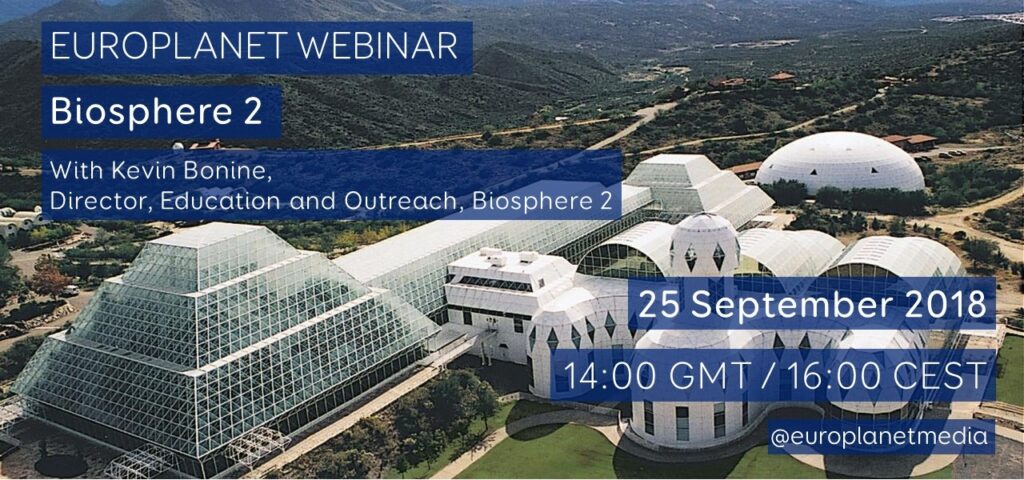Biosphere 2 is the world’s largest controlled Earth science research facility. This month on the webinar we discuss this unprecedented research with Dr Kevin Bonine, Director of Education and Outreach at the Biosphere 2. Join Tuesday, 25 September 2018 at 16:00 CEST / 14:00 GMT. Register and send your questions: https://goo.gl/forms/8wqQ95erti9FTY7o2
Join the webinar via: https://zoom.us/j/658072957

Biosphere 2 is the world’s largest controlled Earth science research facility. Built in the late 1980s, the 2 ha structure has helped us better understand planet Earth, and how we might be able to live on other planets or moons. Under glass, we have a tropical rainforest, a large-scale research ocean, a mangrove estuary, several other biomes, human living quarters, laboratories, and our enormous Landscape Evolution Observatory (LEO) for studying the details of water, carbon, and energy cycling. This inspirational research and education facility would cost about $1 billion to build today; the University of Arizona has been using the facility since 2007, gaining ownership in 2011.
The questions we can ask and answer are fundamentally important. We can manipulate the combination of precipitation, temperature, and carbon dioxide to see how plant communities respond. We can elevate the temperature of the ocean, or decrease the pH, in order to study the resilience of coral communities. In LEO, we can observe how volcanic rock weathers, how carbon sequestration changes over time, and how microbial communities underground contribute to atmospheric gas composition under different precipitation patterns. In short, we can stress systems at large scale, but with control and precision, to see how projected future climate variation might impact the ecosystems we all share on planet Earth. We can also learn more about what it takes to grow food, recycle water, and maintain oxygen levels – all while measuring energy consumption.
Each year, 100,000 visitors come to Biosphere 2, 10% of whom are school children. The dual mission of research and education facilitates better understanding and appreciation of STEM (science, technology, engineering, and math) across audiences. By connecting virtually to schools around the world, we can share our inspiring stories, our scientific understanding, and our vision for the future – and what technological or biological solutions have yet to be invented. Teachers can bring students for professional educator-led offerings in many lesson subject areas, all aligned with Next Generation Science Standards. Teacher training programs include hands-on, residential professional development. Learn more at biosphere2.org.
